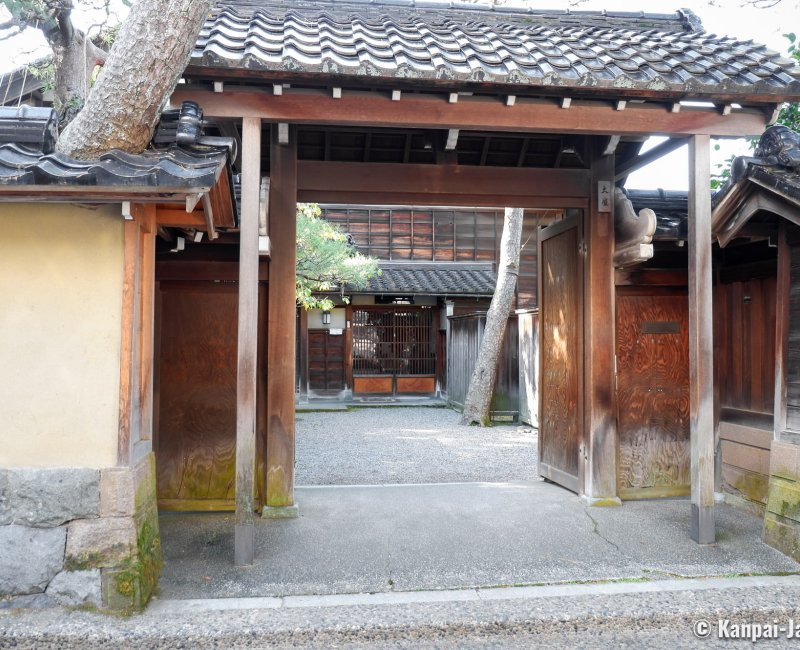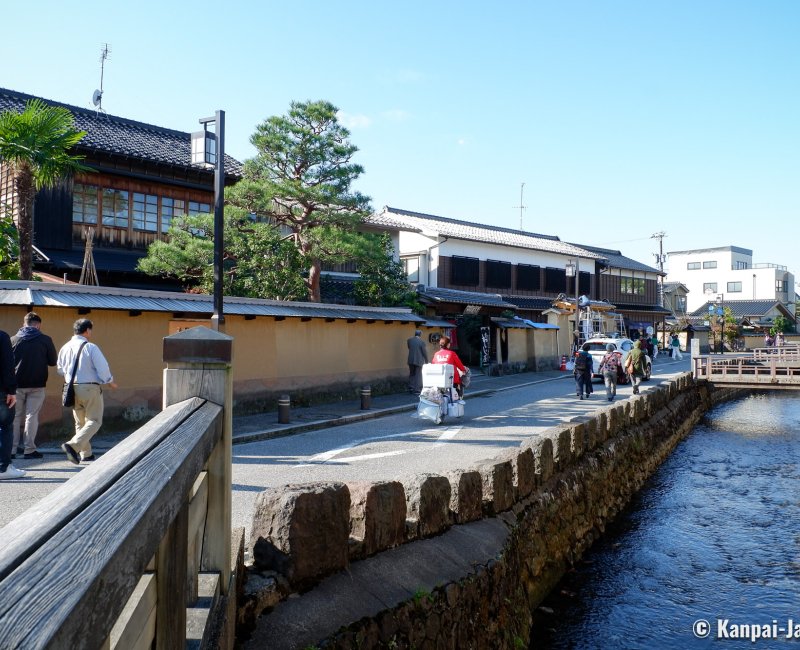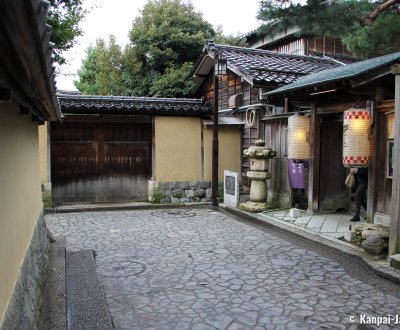Nagamachi
The Samurai District in Kanazawa
Nagamachi is the former residential district of Kaga Domain’s samurais located near the castle in Kanazawa historical downtown in Japan. The narrow streets have retained their old-fashioned charm and are lined with several traditional houses called bukeyashiki that used to shelter the families of feudal warriors.
During the Edo period (1603 - 1868), Kanazawa was the political and economical center of the Kaga Domain, ruled by the Maeda clan, one of the most powerful families of Japan. The feudal city thus acquired a majestic castle 🏯 and the upper and middle classes settled in its vicinity according to their social ranks: warriors, merchants, and Geisha.
Samurais lived in the Nagamachi quarter near the center of power to fulfill their duties to protect their daimyo lord. Their houses 武家屋敷 bukeyashiki line up along narrow paved streets and are characterized from the exterior by earthen enclosure walls of a yellow ocher color that are called tsuchi kabe. The true architectural identity of the neighborhood, some of these walls are said to be more than a hundred years old. In winter, they are protected from freezing by straw mats called komokake.
Kanazawa’s samurai houses were partly dismantled at the end of the 19th century and a lot have disappeared. The last remaining ones are now protected and preserved as the city’s historic heritage. Other derelict residences have also been restored. The discovery of Nagamachi therefore consists in visiting several bukeyashiki transformed into museums retracing the daily lives of warriors of the feudal era.

Nomura-ke, the most famous bukeyashiki residence
Built at the end of the 16th century, the Nomura House was first the property of Denbei Nobusada Nomura, a loyal retainer of lord Toshiie Maeda (1538 - 1599). The residence was thereafter passed down in the Nomura clan for 12 generations until the end of the Edo period. This families, one of the wealthiest of the province, owned lands on a superficies of more than 1,000 tsubo, that is to say 3,300m² scattered in several places.
When visiting this high-ranking feudal house, one can admire:
- A large room called Jodan-no-ma built on a raised floor covered with tatami mats;
- Beautiful cypress wood carpentry;
- Wooden ranma panels between the ceiling and the doors to ventilate the rooms, with elegant sculptures of traditional patterns;
- Delicate paintings on fusuma sliding doors, some of which displaying landscapes by artist Sasaki Senkei (~1743 - 1848), of the Kano school and official painter of the Kaga domain.
The Nomura-ke residence also displays a beautiful Japanese garden that can be seen from the large openings of the house. Decorated with beautiful stone lanterns 🏮, it includes in its center a waterfall producing a soothing melody and flowing into a pond where a few colored koi carps swim.
A 400-year-old myrtle tree is also standing in this green space. The tour ends by an exhibition dedicated to the family’s personal belongings.

The restored vestiges of the Takada Family House
The Takada Family’s estate offers a change of scenery: the house doesn’t exist anymore, but part of the buildings has been rebuilt. This collective residence composed of several dormitory-houses was intended to host lower ranking samurais. The Nagaya-mon gate is the main structure to visit in the remains of the Takada house.
One discovers the spartan life of the servants and other people working at the times for the owner’s family, as well as the stables. A small circular Japanese garden around a pond completes the visit. The water is extracted from the Onosho Canal, which flows on the side of the house and is one of the oldest waterways of Kanazawa.
A stroll in the streets of Nagamachi offers a trip in the past of the feudal city where the quietness of the samurai quarter contrasts with the neighboring bustling shopping area of Korinbo. Beside the historical museums, you will also find a few cafes, restaurants, and traditional craftsmanship shops in the bukeyashiki, that still entertain the old times’ charm.

